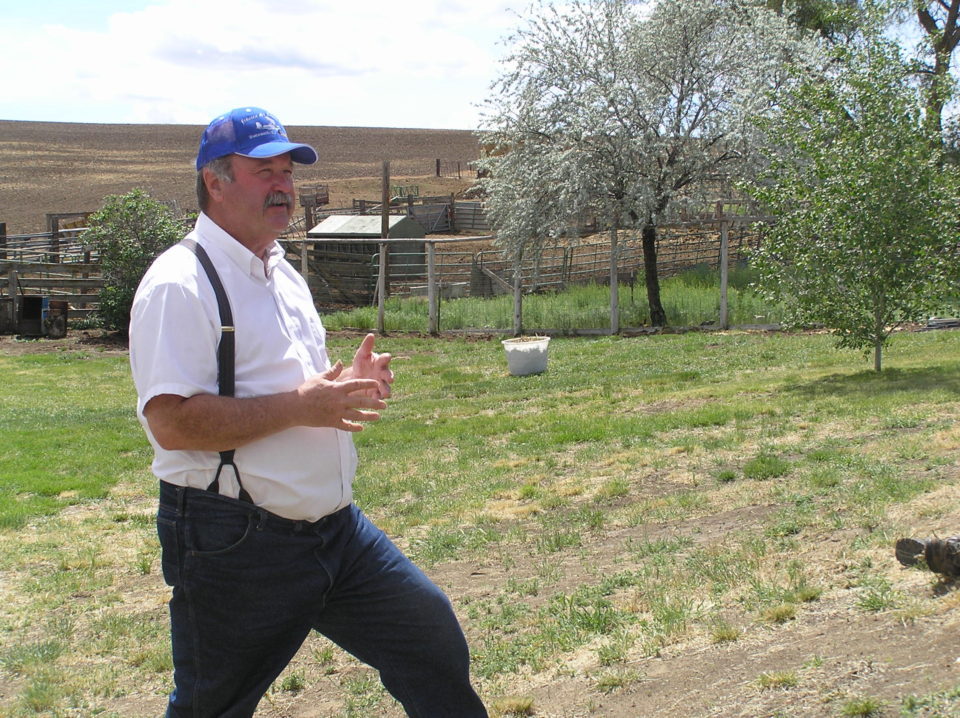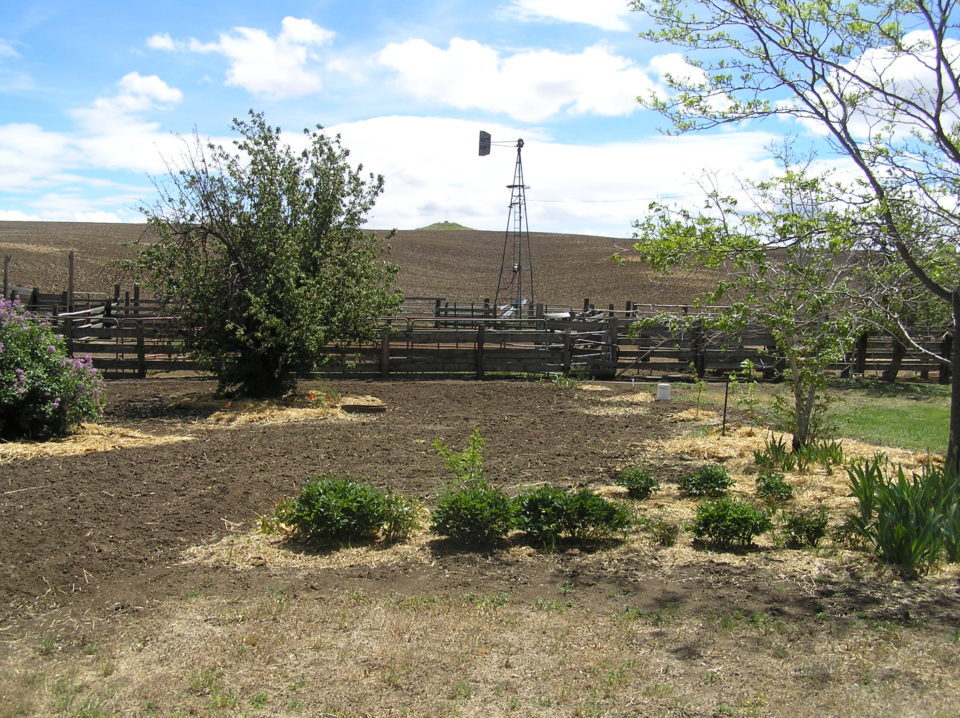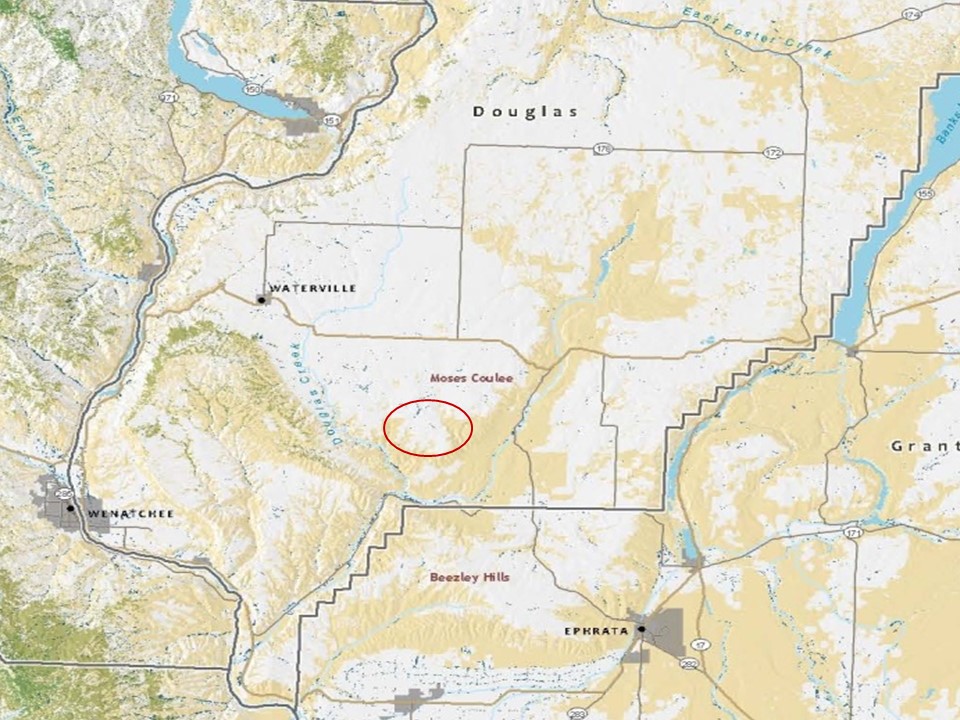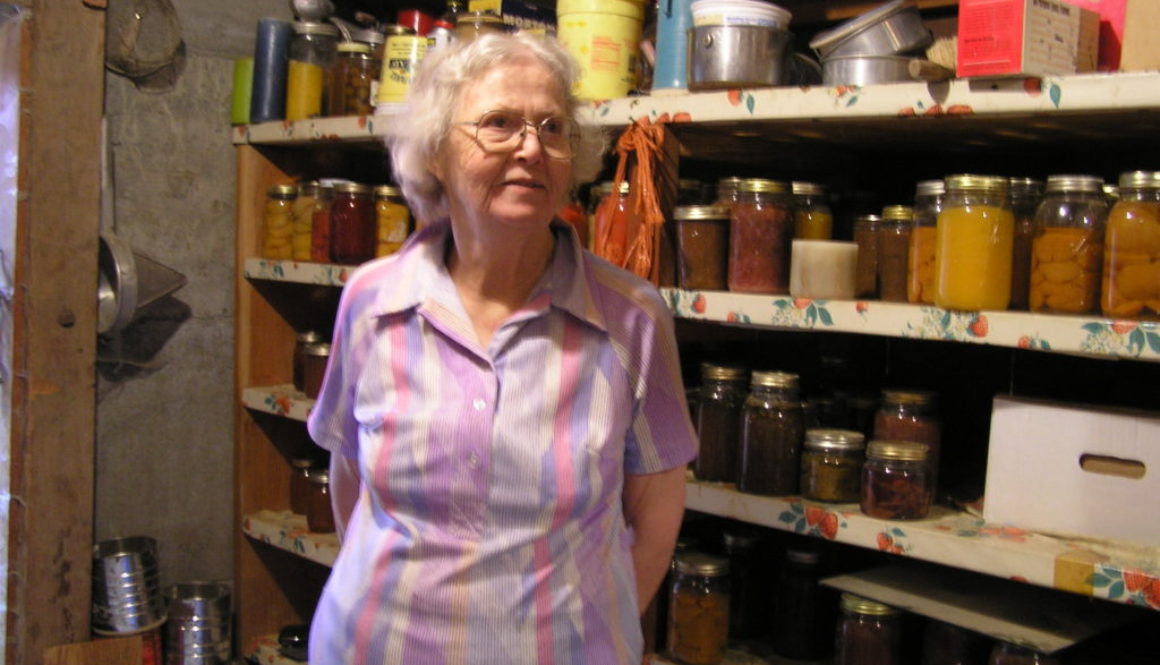The Art of Self Sufficiency:
Taking Care and Preserving Food on the Waterville Plateau
One thing I’ve come to understand after gathering stories for the past 15 years, everyone has a story and something to teach us about caring for this place if we invite them to share. Sometimes those stories are about restoring the health of a landscape; sometimes they are about helping a family business thrive. But one story that has been front of mind in recent days is that farmer Mary O’Brien shared about her lifelong practice of preserving food. While she helped me learn more about specific skills, such as butchering chickens and canning meat, the take-home message from this interview that seems timely to our current social-distancing challenge is this: no matter where you live, country or city, taking care of yourself and your family is also taking care of community.
Excerpts from the 2006 interview with Mary O’Brien are included in the following transcript of the Gathering Our Voice program broadcast on KOHO Radio. The recording and transcript of the full interview will be available this fall as part of the Thinking Like a Community archive.


Nancy Warner: It’s possible to find signs of spring high on the Waterville Plateau by late February. Sagebrush buttercups and parsleys blooming on south-facing slopes. Flocks of sandhill cranes flying overhead. An early Say’s phoebe perched on a fencepost. But to get a glimpse of summer the best place to go this time of year is underground. Underground into the root cellars of longtime residents such as Mary O’Brien, where the warmth and color of the growing season sits ready to use in the jars that line her shelves.
Putting up enough food to take care of herself and her family throughout the year is a tradition in Mary O’Brien’s family. Born in 1928 near Conrad Montana, Mary came out to Douglas County to work in her uncle’s orchard the summer of 1946. The following year she married local farmer John O’Brien and moved out to the family’s place where she’s lived ever since. She describes how she learned the skills, from canning fruit to butchering chickens, that enable her to be so self-sufficient.
Mary O’Brien: We were in 4H in Montana and mother said if you’re gonna raise chickens for 4H you’ve got to learn to butcher them. So that’s what she taught me and that’s what I did. (laughs) And milked cows and everything else.
NW: Tell me a little bit about actually butchering a chicken.
MO: I always kill them and put them in boiling hot water and dip them in the water until the feathers come loose and then you pick em. Then I singe them and put them in a tub and then I dress em and you cut behind the tail and down and then draw the insides out. And then that all comes out in one piece. Then I soak em in cold water until the blood was out of them.
NW: With stores many miles away, Mary has taken care to preserve as much of her food as possible. For her and others like her who live in remote rural settings it’s a matter of convenience.
MO: Well I live 20 miles from town and there’s lots of times I didn’t have things ready to use so I’d can them and then I had things on hand.
NW: Yeah you were telling me about sometimes you’ve been stuck out here in the wintertime for 2 weeks at a time.
MO: We always had plenty on hand. You know we had canned meat, we had canned chicken, I canned vegetables, we always had plenty to eat. There for a while we milked a cow and I churned and had butter and everything. But we had everything we needed. If we got snowed in, we got snowed in.
NW: Did you learn much from your parents directly?
MO: Everybody took a job. And there was eight of us and mother raised a garden and that was a large garden and then we’d help her you know like shellin peas and gettin the vegetables and helping her do everything. And she canned a lot of fruit. I had an aunt and uncle in Orondo that had an orchard and they would send her boxes of fruit on the train from Wenatchee to Conrad. And Dad would go in there and get them. And we helped Mother can. A lot of the meat like the pork dad would put down and a brine in stone jars. Stone crocks and sometimes Mom would can cause they didn’t have freezers to put them in. So mother would can so much and then they’d take the hams and they made sausage. And Mom would always fry her sausage and then put it in the stone jars and put lard on it, you know, cover it with lard. And then she’d fry another batch and that’s the way she filled the stone jar. And when we want to eat it, we just
go out there and take her pan and spoon and dig the lard back and get the sausage and put it in the skillet and she’d heat it and then we’d have fresh sausage.
NW: So, when it came time to fix dinner it was really fast?
MO: Yeah.
NW: All you had to do was warm it up!
MO: You’d have to take it out of the – make sure you got it out and it was sealed again. The crock would seal. Otherwise you’d spoil it, you know, if you got air in there. They had an old cellar at home. That’s where a lot of the stone jars were put down. And mother would keep them covered. She’d make her own cheese and that was home. They lived quite a ways from town. Well they kind of had a smokehouse and that’s where they’d hang the hams until they were cured. And then they would go down in the cellar.
NW: If you were sent down to the root cellar say when you’re a little girl of eight and you’re helping your mom get dinner, could you just describe what that root cellar looked like? What all would be in there?
MO: Well, it had steps to get into it and then she had jars and jars of canned vegetables. Beef and peas and then they’d take their beets and cabbage and they put them in a kind of an underground thing and cover them with dirt. They’d never freeze but then when spring came Dad would go out there and dig up some of that and we had fresh cabbage or you know whatever he had put in there. That’s the way they did things cause they didn’t have deep freezes or refrigerators.
NW: So, cabbages and carrots and beets and potatoes?
MO: And rutabagas.
NW: Do you like rutabagas
MO: Yeah, I do.
NW: How do you cook em?
MO: Well you course peel them and then mother used to put them in stew and it was good.
(laughs)
NW: Mary remembers the method that was used to can meat in the days before pressure cookers came into use.
MO: Years ago, they canned their meat in boilers. You know, they’d put them in the boiler and water and they’d cook them for four hours. A great big boiler like this and then Mother had little boards across the bottom of it. But it was made to fit the boiler and you took the jars on there and put it on the stove and you just let it boil for and there’s some people do it that way yet.
NW: Waste not want not was more than a saying in Mary’s family. She describes how even large game could be fit into small jars after her brother and his friends returned from a hunting trip one day.
MO: And the came home with four or five elk. Mother didn’t have any way to take care of them. So, she canned. We had elk steak for breakfast, we had elk! (laughing). But you know we were young and we didn’t think anything of it
NW: You’ve always been out. Tell me a little bit about how you’re so comfortable living in isolation.
MO: Well it’s lonesome sometimes but its home and I love it. (laugh) But you know where’s your home is that’s where you make it.
NW: For Gathering Our Voice, I’m Nancy Warner.


